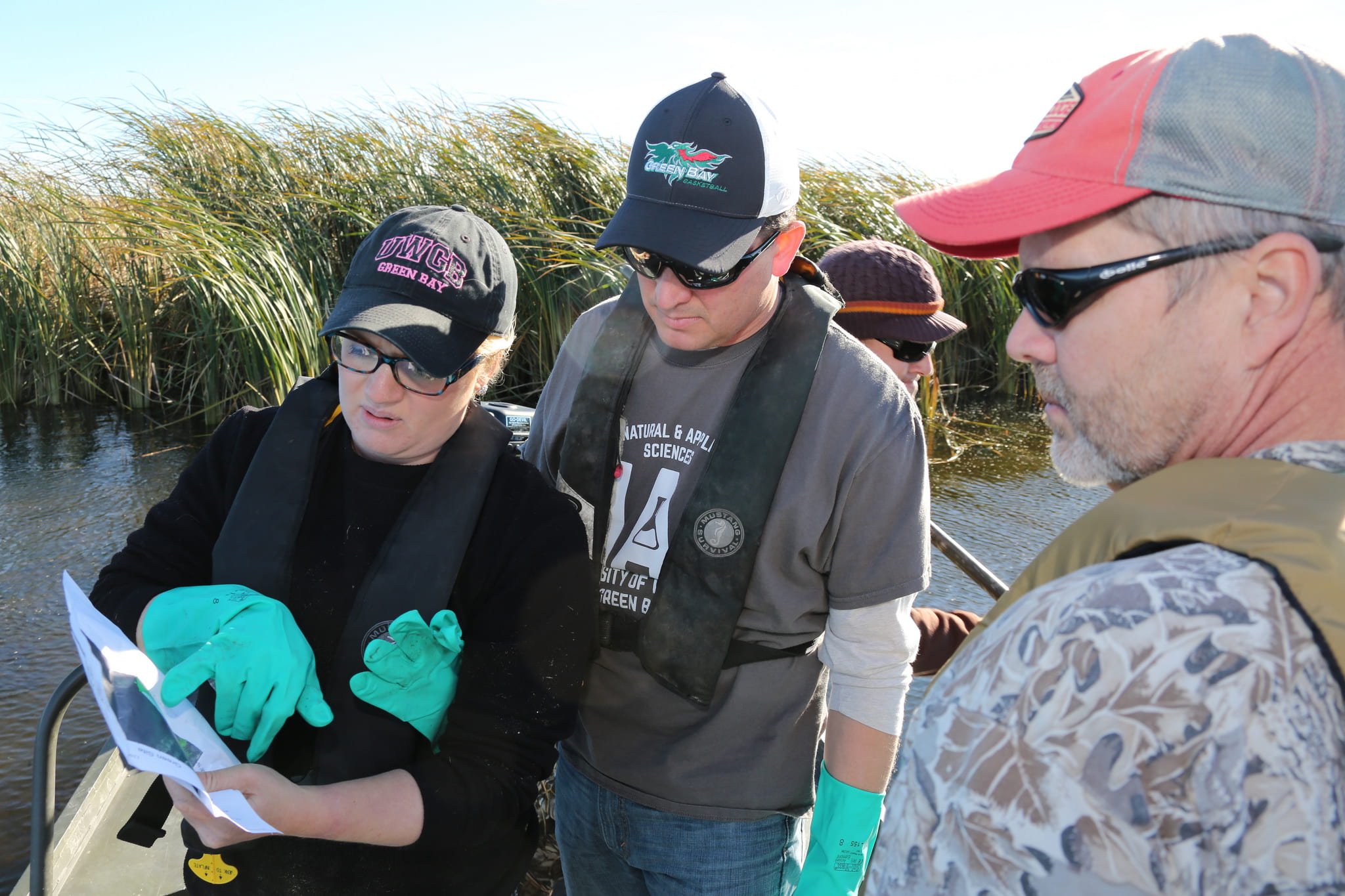UW-Green Bay and partners work on restoring lower Green Bay by seeding 20 acres of wild rice

“We left this bay [Green Bay] to enter the river [Fox River] that discharges into it; it is very beautiful at its Mouth, and flows gently; it is full of bustards, ducks, teal and other birds, attracted thither by the wild oats of which they are very fond.”
Midwest missionary and explorer Father Marquette describes the former abundance of wild rice that once filled Green Bay in the 17th century. Biologists, researchers and others from Ducks Unlimited and the University of Wisconsin-Green Bay continued efforts to restore lower Green Bay by reintroducing wild rice in the bay in early November.
They seeded 20 acres of wild rice into the lower Bay and Fox River area known as the Duck Creek Delta. The restoration efforts are being funded by a $225,000 federal grant awarded to UW-Green Bay and Ducks Unlimited in 2014 for “Cat Island and Duck Creek Delta Restoration: Restoring Green Bay Aquatic Vegetation and Avifauna.”
Wild rice has long nourished both people and wildlife. It benefits water quality, supports biodiversity, and provides habitat for many of the birds and fish important for recreation in Green Bay. However, erosion, pollution, and eutrophication at the mouth of the Fox River began degrading aquatic vegetation and animal life about 70 years ago.
As the Cat Island Chain was restored, it gave vegetation once native to the area a chance to grow again, however, not necessarily repopulate. That is where Ducks Unlimited and UWGB students and researchers come in. The wild rice reintroduction project began in January 2015 and appears largely successful. Three separate areas were seeded this year including the original tributaries. The areas were chosen based on the characteristics beneficial to wild rice establishment including appropriate sediment type, degree of protection and water flow. A minimum of five acres will be reseeded for five consecutive years in efforts to establish a viable population of wild rice.
The seeding process is unique. According to Brianna Kupsky, a master’s student and researcher in UW-Green Bay’s Environmental Science and Policy program, groups of three to four individuals travel to seeding locations by boat. They then seed about three acres of rice at a time completely by hand. Each three-acre area takes approximately one hour to seed. The wild rice is purchased from vendors in Wisconsin and Minnesota in September and October. However, seeding does not occur until the waterfowl are past migration (early November), as they may disrupt the process.
Kupsky says partners see restoration of lower Green Bay as a tremendous opportunity, and she believes UW-Green Bay should be a major player in that opportunity.
“Wild rice is a really charismatic species and often targeted for restoration,” said Kupsky. “If we can re-establish wild rice in the lower Bay, it will build immense interest and investment in the restoration. Restoration of the coastal wetland habitat in the lower Bay is not only important for intrinsic value and biodiversity, it’s also really important for our local economy in terms of recreation dollars, improved water quality, and the port of Green Bay.”
The lower Bay and Cat Island Chain restoration would not be possible without other agencies including the Fish and Wildlife Service, Army Corps of Engineers, Brown County Port Authority, Wisconsin Department of Natural Resources, The Nature Conservancy, UW Extension and UW-Sea Grant. See more on the Cat Island Restoration project.
Click to advance slideshow or view the album on Flickr.

– Photos by Dan Moore, Marketing and University Communication, story by editorial intern Amy Bauer.




